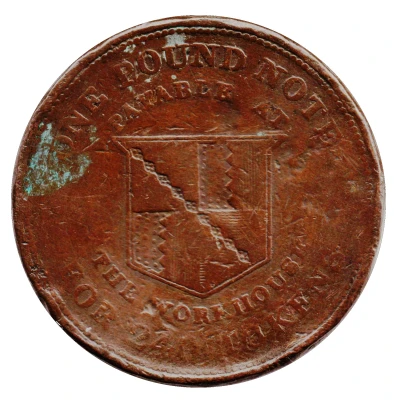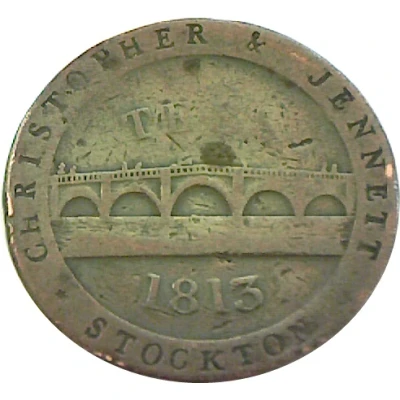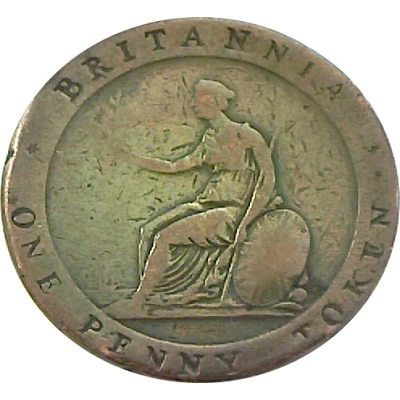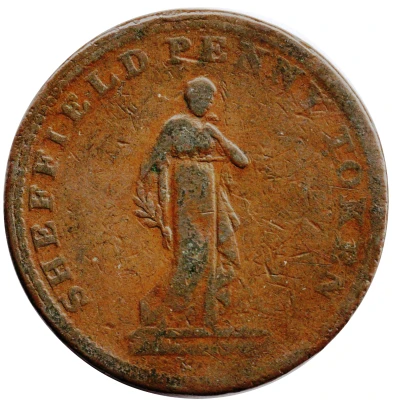
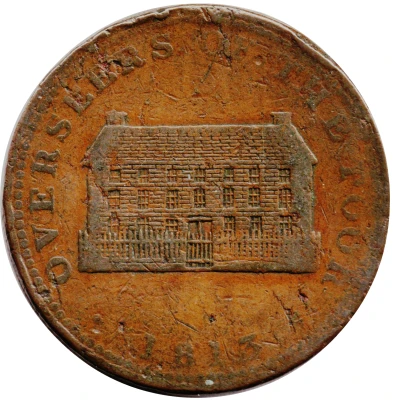

1 Penny Yorkshire - Sheffield / Workhouse
1813 year| Copper | 19.8 g | 34.2 mm |
| Issuer | United Kingdom (United Kingdom, British Overseas Territories and Crown Dependencies) |
|---|---|
| Type | Token |
| Year | 1813 |
| Value | 1 Penny (1⁄240) |
| Currency | Currency tokens (1798-1816) |
| Composition | Copper |
| Weight | 19.8 g |
| Diameter | 34.2 mm |
| Thickness | 2.5 mm |
| Shape | Round |
| Technique | Milled |
| Orientation | Coin alignment ↑↓ |
| Demonetized | Yes |
| Updated | 2024-10-09 |
| Numista | N#52865 |
|---|---|
| Rarity index | 77% |
Reverse
View of the Sheffield Workhouse building. Lettering around, date below, beaded border
Script: Latin
Lettering:
OVERSEERS OF THE POOR
· 1813 ·
Edge
Centre grained //////
Comment
References: W J Davis, The Nineteenth Century Token Coinage, 126-133.Workhouse Token: Similar in scope and purpose to the ordinary token, but issued by local overseers of the poor. Birmingham, Bradford, Halesowen, Keighley and Sheffield were among the towns where workhouse tokens were issued. In order to avoid hardship to people who had accepted the tokens, those of Birmingham and Sheffield were granted a six-year extension when other tokens were declared illegal in 1817.
Interesting fact
One interesting fact about the Token 1 Penny (Yorkshire - Sheffield / Workhouse) 1813 from United Kingdom is that it was used as a form of currency in the Sheffield Workhouse, which was a place where people who were unable to support themselves financially could live and work. The coin was made of copper and weighed 19.8 grams. It is a rare and valuable collector's item today, with some examples selling for thousands of pounds.

